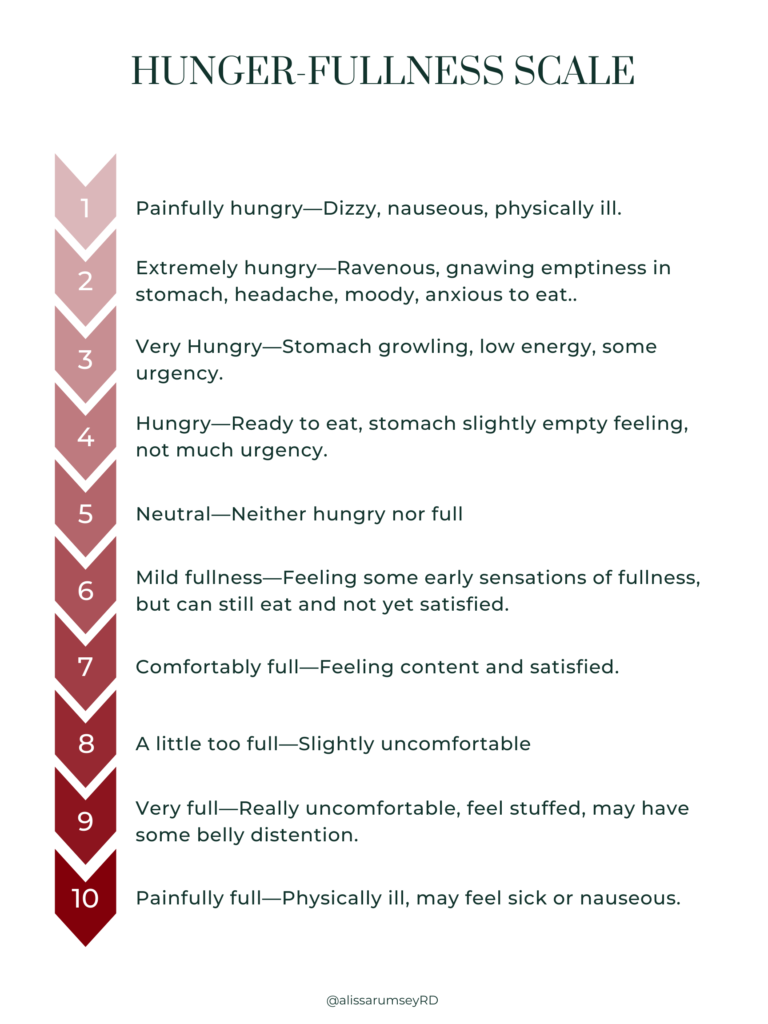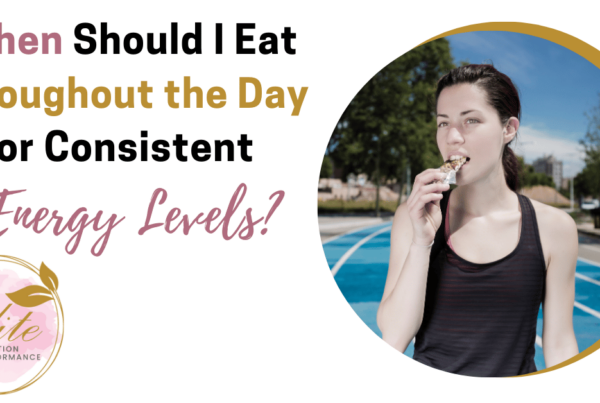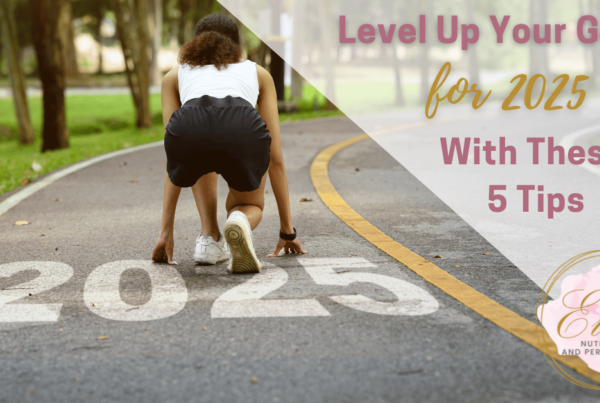If you frequently find yourself being uncomfortably full after meals, you are not alone. Here are my top tips to help you stop eating when full, so you can find comfortable fullness and naturally feel “done” eating – no control or force needed.
“My problem is that I just can’t stop eating when I’m full.” – I hear this from people all the time.
Oftentimes, when people hear about intuitive eating, they immediately focus on the “honor your hunger” and “feel your fullness” part of it. Which makes a lot of sense, given that the diet culture we live in regularly teaches us that we cannot trust our own bodies and that – if left to our own devices – we will just keep eating and eating and eating.
Diet culture teaches us that we can’t trust ourselves and that we must follow external rules to stay “in control,” so it makes sense if your brain attempts to do the same with hunger and fullness. If you are still in a part of your journey where you do not trust your body, it’s common to latch onto rules like “only eat when hungry” and “stop when you feel full.”
So it’s no wonder people zero in on the “feel your fullness” part of intuitive eating.
But in reality, the reason you may eat past the point of “comfortable” fullness has pretty much nothing to do with noticing and feeling your fullness. Yes, some people are out of touch with what “comfortable” fullness feels like, but just being able to tell what various types of fullness cues feel like is usually not what actually makes people stop eating when full.
How to Stop Eating When Full
An important point: it’s totally normal to eat past “comfortable fullness” from time to time. This is where the flexibility of intuitive eating comes in, versus the rigidity of dieting and diet culture (part of the reason why diets don’t work). The other night I had the most delicious multi-course dinner at a restaurant and definitely left there feeling uncomfortably full. It’s fine. Our bodies can handle it. And also, it doesn’t feel great to be uncomfortably full after every meal.
If you find yourself regularly eating past the point of “comfortable” fullness (we’ll get to what that means in a minute), most likely this has nothing to do with the ability – or inability – to “feel” your fullness. While yes, some people are out of touch with what “comfortable” fullness feels like, just being able to understand various types of fullness cues is usually not what actually makes people stop eating.
Feeling Your Fullness and Feeling “Done” Eating Are Not the Same
Trying to force yourself to “stop eating when full” never works long-term. It will almost always end up backfiring because it causes a sense of scarcity in the body and can bring up restrictive thoughts or feelings.
I find that most people will get to a point where they naturally feel “done” eating—not because they are forcing themselves to stop, but because their body stops wanting food.
To get to a point when you can stop eating when full, practice a few things:
- Be aware of your hunger cues*
- Eat every time you feel hungry*
- Allow yourself permission to eat whatever you want
- Eat satisfying foods that taste good to you
*Some people may not be able to feel their hunger cues, and that is ok — the important thing here is that you are eating consistently (every 3-4 hours or so) and eating enough throughout the day.
If you aren’t eating consistently and honoring each and every hunger cue, then it is really hard to stop eating once you feel full. Your body doesn’t trust that you’ll eat the next time you’re hungry.
As a result, you’ll likely feel the urge to continue eating even once you notice a “comfortable” fullness feeling.
Not to mention, diet culture and chronic dieting can make us feel like we “have” to eat at mealtimes—when it’s allowed. This means that leaving food behind can be difficult.
Instead of trying to “fix” by forcing yourself to stop eating when full, focus on building back body trust by honoring your hunger cues, eating consistently throughout the day, and giving yourself unconditional permission to eat (I discuss this in much more detail in my book, Unapologetic Eating).
Then you can get to a place where you just feel “done” eating – no force or control needed.
Feeling “Full” vs. “Not Hungry”
Fullness is not just the absence of hunger. Many people confuse feeling “full” with just feeling “not hungry” – but these are two different things.
This confusion occurs often, especially in chronic dieters or people who’ve been restricting their food intake. They end up stopping at “not hungry” (~5-6 on the hunger-fullness scale, which is really “neutral” – see below) instead of eating until full.
You may be stopping at “neutral” and not eating enough if you:
- Never feel fully satisfied
- Often get hungry soon—within one to two hours—after eating
- End up grazing throughout much of the day and evening
Needing to eat every few hours doesn’t necessarily mean you aren’t eating until fullness. However, this could be a sign that you’re stopping closer to “neutral.” Notice where you may have sneaky diet mentality rules popping up.
For example, one client said, “I should have a lunch that keeps me full enough to not want to eat all afternoon.” That should is a red flag of some sneaky diet mentality.
There’s nothing wrong with you if you want to eat between meals. If your meals are more than several hours apart, then it might feel most supportive to have some snacks. However, if you’re unable to go over a couple of hours without thinking about food, you may not be eating enough.
(Remember: thinking about food can be a sign of actual physical hunger.)

How to Feel Your Fullness
Here’s a little secret: When you are tuned in to your hunger signals, eating satisfying and filling foods whenever you feel hungry, letting go of physical restriction, and reframing restrictive thoughts, then you don’t really need to pay much attention to fullness.
You may be thinking something to the effect of, “Yeahhhh…no way.” But trust me; when you’re doing all of these things, what you’re really doing is building back body trust. Your body begins to trust that you’ll allow it whatever it wants the next time it sends a hunger cue.
When you build back that trust, you’ll start to naturally notice that you’ll hit a point when you feel “done” eating.
Now fullness can feel different for everyone, but often it may feel like:
- A slight feeling of heaviness
- Feeling of weight in the belly
- A somewhat bloated or rounded belly
- A feeling of “nope, I don’t want any more food I’m done”
Finding “Comfortable” Fullness
For most people, when they eat to the point of “comfortable” fullness they are generally are able to go 3-4 hours before thoughts of food pop up again and before they get hungry.
This is a great place to experiment: What happens if you push a bit past what you think “comfortable” fullness is?
- How does that feel?
- Do you feel more satiated?
- Are you able to go several hours before thinking about food?
- When do you start to get hungry again?
An example from one of my clients: she realized that when she ate to her “comfortable fullness” she was able to go 3-4 hours at work without thinking of food, she could concentrate better, and she had more energy during the day.
Again, there is no right or wrong and no “messing up.” Experiment, get curious, and notice what you feel in your body.
Stay Flexible
Although it can help to play around with your feelings of fullness and examine what those sensations feel like in your body, try not to force the “stop eating when comfortably full” thing. As I mentioned above, this tends to backfire because it causes a feeling of scarcity and can trigger the rebellious part of you to say, “Eff it. I’m going to do what I want,” and keep eating.
When you feel ready to practice noticing different levels of fullness, the hunger-fullness scale can be a helpful tool. The sensation of fullness varies from person to person. Play around with what “comfortable” versus “slightly overfull” versus “really uncomfortable” feel like to you.
Remember: you can be tuned in to your body’s hunger and fullness cues and still eat past the point of comfortable fullness, which is okay (and completely normal!).
Try to notice any rigid pattern of thinking and call it out as diet mentality. Use self-compassion and remind yourself that there is no such thing as “perfect” eating. You’re involved in a learning process with the goal of exploring your body’s sensations and cues.
Exploration, experimenting, and curiosity are the goals—not perfection.
How to Build a Filling Meal
In general, a filling meal will include several things:
- All three macronutrients: carbohydrate, protein, and fat.
- Foods that taste good and are satisfying to you.
Certain foods will fill you up for a longer period, and others will keep you full for a shorter time. Neither one is “good” or “bad”; it’s just information. You can file that information away and use it—as part of your brain knowledge—along with your body knowledge to help make food decisions down the road.
For example, a client of mine used to crave dessert all of the time and would beat herself up when she wouldn’t stop eating when she felt full.
Here’s what was going on: she had relegated sweets to the “bad” category, so she was only “allowing” herself to have dessert a certain number of times each week. She was also doing more grazing during the first half of the day, not ever sitting down to a full meal until dinner.
When we started working together, one of the first things we did was remove the dessert restriction. She also made an effort to notice her hunger cues and eat more consistently throughout the day whenever she felt hungry.
After several weeks of doing this, my client shared:
“Before, my favorite thing to eat would be dessert. I would crave it all the time, especially when I got home from work and after dinner. Now that I’m allowing myself to have dessert whenever I want. I’ve realized that the meals that are most filling and satisfying are those that are full meals that are more substantial. I’ve been craving meals that have some type of meat or protein, a starchy carb, and vegetables. I still want dessert, but I feel so much more full and satiated during the day when I eat a ‘full’ meal.”
Fullness is not the same as satisfaction.
You can only eat so many broccoli florets or high-fiber crackers before you feel full. But while these foods may take care of the physical part of satiety, what about the mental aspect?
So you feel full after eating a huge bowl of veggies, but are you satisfied? Chances are, the answer is no. And when you don’t feel satisfied, you’ll continue to search for foods to give you that satisfied feeling, regardless of how full your stomach is.
Next time you pick something to eat consider both what will fill you up AND be satisfying to you.
Some Bloating is Normal
If you’re not used to eating enough, then “comfortable” fullness may feel a bit uncomfortable. However, that doesn’t mean you’ve eaten “too much.” It means that your body may legitimately need much more food than your feeling of “comfortable” (or “acceptable”) fullness suggests.
You may need to get used to what fullness actually feels like. For example, occasional bloating and gas is totally normal and is not necessarily a sign that you’ve eaten “too much.” Feeling bloated occasionally is no different than getting a headache occasionally – it just happens. This is your body just doing its thing. Unless it’s happening on a regular basis or becomes painful, it’s probably not something to worry about (though when in doubt, check with your doctor).
For people who’ve been restricting or engaging in other disordered eating behaviors, some level of delayed stomach emptying is very common. This means that you may feel heartburn, bloating, or gas, or you may notice that you get full quickly.
Most of the time, this is a normal and expected part of the process. Over time, as you eat more, have a larger variety of food, and work on reducing anxiety or stress (which can cause gastrointestinal issues), these symptoms do typically resolve.
Looking for more support?
My team and I offer virtual one-on-one coaching and can help you get out of the all-or-nothing mindset, find the gray area, and make peace with food and your body – check out our nutrition coaching packages to learn more.
You can also check out my Unapologetic Eating 101 Course, an online, self-paced intuitive eating and body image program to liberate yourself from dieting and make peace with food and your body.








